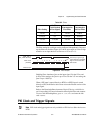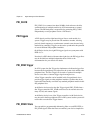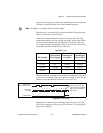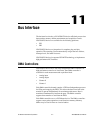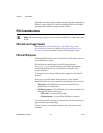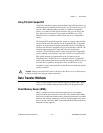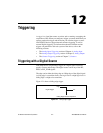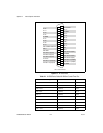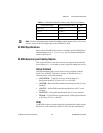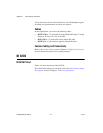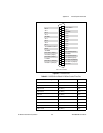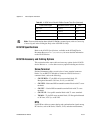
© National Instruments Corporation 12-1 NI 6238/6239 User Manual
12
Triggering
A trigger is a signal that causes an action, such as starting or stopping the
acquisition of data. When you configure a trigger, you must decide how you
want to produce the trigger and the action you want the trigger to cause.
NI 6238/6239 devices support internal software triggering, as well as
external digital triggering. For information about the different actions
triggers can perform for each sub-system of the device, refer to the
following sections:
• The Analog Input Triggering section of Chapter 4, Analog Input
• The Analog Output Triggering section of Chapter 5, Analog Output
• The Counter Triggering section of Chapter 7, Counters
Triggering with a Digital Source
Your DAQ device can generate a trigger on a digital signal. You must
specify a source and an edge. The digital source can be any of the PFI,
RTSI, or PXI_STAR signals.
The edge can be either the rising edge or falling edge of the digital signal.
A rising edge is a transition from a low logic level to a high logic level. A
falling edge is a high to low transition.
Figure 12-1 shows a falling-edge trigger.
Figure 12-1. Falling-Edge Trigger
High
Fallin
g
Ed
g
e Initiates Acquisition
0 V
Digital Trigger



